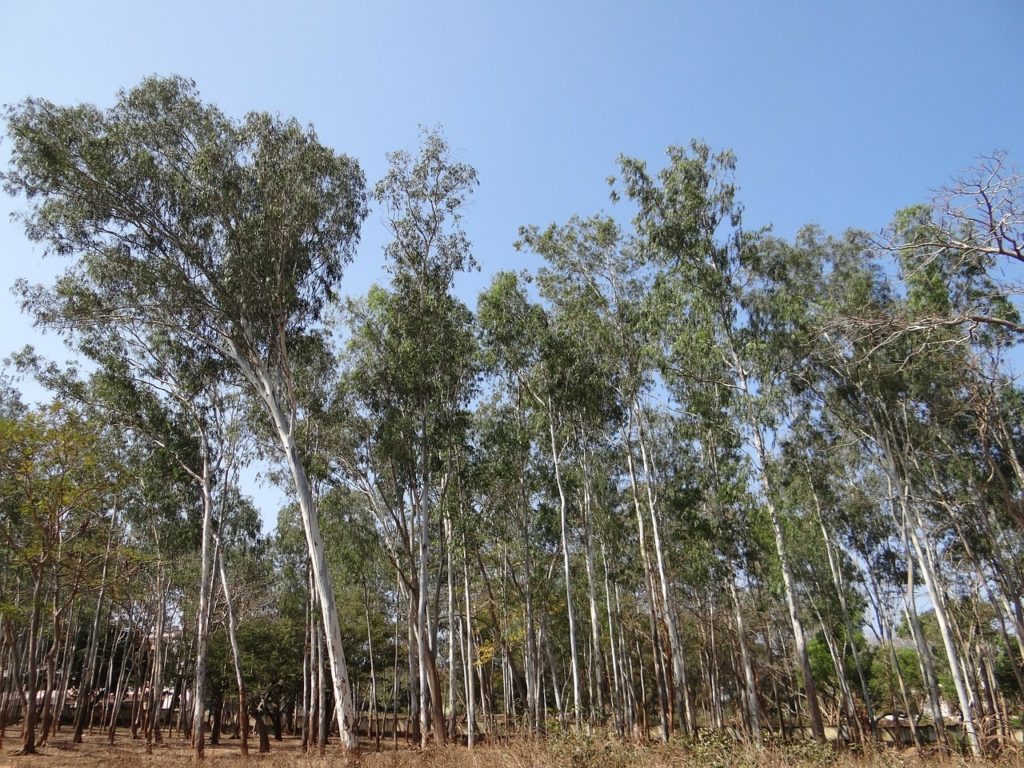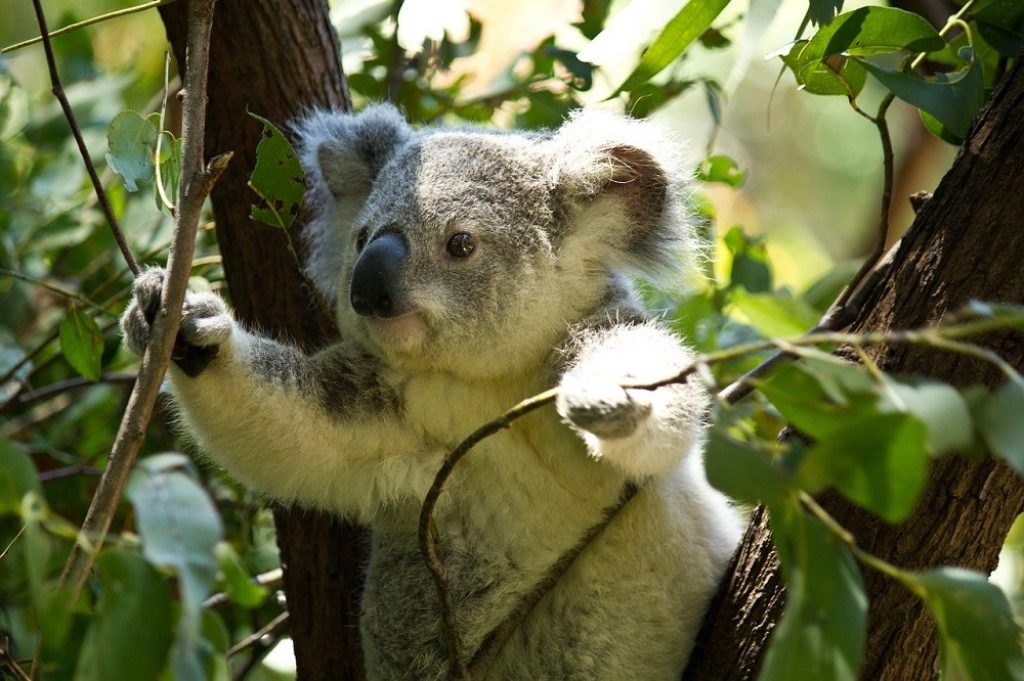
Eucalyptus species are widely grown and utilized throughout much of the world, Dr Arne Witt reports. They are a valuable source of timber, fuelwood, paper, nectar, etc. and as such often grown in woodlots and plantations. However, many of these introduced species have escaped cultivation and become invasive.
In South Africa gum species including E. camaldulensis, E. cladocalyx, E. diversicolor, E. grandis, E. lehmannii, E. paniculata, E. sideroxylon, etc. are regarded as being invasive, reducing biodiversity and having a significant negative impact on dwindling water resources.
In fact invasive Eucalyptus species in South Africa are responsible for the loss of 16% of the 1,444 million cubic metres of water resources lost to invasive plants every year. They are thirsty trees! Invaded landscapes also have significantly higher biomass than natural/native vegetation which means that they pose a significant fire risk. Invasive plants like pines, Australian acacias and gums fuel fires.
There are many possible reasons as to why introduced species become invasive – the introduced species is adapted to grow in a wide range of climatic regimes or soil types; it is dependent on generalist pollinators; it has no natural enemies in its adventive range; grows rapidly; establishes easily; etc.
With these attributes invasive plants can outcompete/displace native species for space, access to nutrients and water, etc. Gums have another tool in their arsenal and that is allelopathy – they displace other species through chemical warfare, in other words they release chemicals that other plant species don’t like. In this way they displace native species, improving conditions for themselves – eliminating competitors, etc.

Wetlands in water scarce countries are critical, especially now that climate change is impacting on the frequency and abundance of rainfall. However, in the past, gums were used to dry up wetlands, swamps, marshes, etc. to try to curb the incidence of malaria – the gums suck up the water which is then lost to the atmosphere as a result of evapo-transpiration.
There is anecdotal evidence that a large gum tree growing near water can suck-up 1000 litres of water a day but that is probably an exaggeration – others state that its more like 200 litres of water a day. Either way, they use a lot of water.
There are other reasons for destroying wetlands. How effective this practice was in reducing the incidence of malaria I am not sure but many would believe that it did. However, there are better and more effective ways of controlling malaria.
So, in a nutshell some gum species have become invasive. However, many of these invasive species have costs and benefits – costs include negative impacts on biodiversity and water resources, while benefits include timber, fuelwood, etc.
To try to mitigate their negative impacts it is important not to grow them near any water resources – wetlands, rivers, etc. where they will have a far greater impact on water. Woodlots/plantations should also be well managed – any seedlings which establish outside of woodlot/plantation should be removed as a matter of urgency. Efforts are now also underway to produce sterile cultivars to reduce their invasive potential.
A recent study in South Africa showed that invasive Australian acacias, pines, gums and other woody weeds growing in water catchments that supply Cape Town with water are using up two months of Cape Town’s water supply every year. As such, it is important that these species be managed – without water there can be no life.
Additional information
This blog stems from an article which Dr Arne Witt contributed to that appeared in the Swiss German language newspaper Neue Zürcher Zeitung.
9 Comments
Leave a Reply
Related News & Blogs
Devilweed: the ‘green invasion’ that’s destroying biodiversity and livelihoods
In a new video from BBC Earth, CABI’s Dr Arne Witt tells us about the devastating impact of Chromolaena odorata, commonly known as ‘Devilweed’. As part of the BBC’s Our Green Planet initiative, the video raises awareness about the impact of invasive sp…
7 April 2022



Great article. Please share more scientific data on this contentious topic
Anecdotal reports are exactly that….anecdotal ….with no scientific basis. Plantation forestry use 3% of the available water resources in South Africa and 0.8% of the mean annual runoff. Water lost through poor maintenance or lack of maintenance of water pipes and infrastructure is three times more than water used by plantations .
Poorly researched article. Most of these Eucalyptus species do not occur in South Africa. Lose comments about water usage without scientific reference. No reference to excellent work accomplished in wetland rehabilitation. Not what one would expect of a scientist (PhD). Not suitable as an information piece, not suitable as an opinion piece and definitely not as scientific literature. More of an emotional expression of opinion.
These comments are my own. Dr M. du Plessis
This article is based on misinformation. Eucs in South Africa are divided into 3 groups. The ones deemed to be invasive such as the river red gum, the sugar gum etc are allowed to be planted as long as they are more than 50m away from a watercourse.
The hype in your article leads everyone to believe that gum trees are undesirable and must be removed at all costs because they are “thirsty”. In fact the figures quoted in your article are based on poor science where water flowing over a weir in a river infested with eucs was measured before they were removed and then measured again the next year after the eucs were removed and the increase in waterflow extrapolated to arrive at the estimated water consumption of the eucalypts. Sounds wonderful but no comparison of the rainfall between the two years was made.
Because of articles like this the Western Cape Deciduous fruit industry faces the dilemma of not having enough bees to pollinate the crops. Beekeepers rely almost entirely on the various eucs to keep their swarms alive during the rest of the year.
As friends of the Liesbeek your focus is the river and its health, keep it that way and by all means remove any eucalypts which are within 50m of the river but dont declare war on a tree that is essential to our country. The fact that eucalypts burn with a fiercer heat than other trees is also a myth. In fact if you look at the pine plantations alongside the N2 next to the Steenbras dam you will see that there is a firebreak with borders of Saligna gums before the pines begin. That was done to give the firefighters a chance to stop the fire at the row of gumtrees before it moves into the pines.
Please lets spread the whole story when we publish articles of this nature. We have enough fake news doing the rounds.
Ethiopia is planting millions of hectares of eucalypts, their rainfall has increased, the economy has improved, their poor have been uplifted and they have begun exporting honey as a result.
Andrew Klopper
Good morning all. I have noted your comments. Far from being anecdotal, the numbers that are quoted in the article are from published scientific literature. Estimates of the litres per tree are always problematic because they depend on tree size, tree age and many other factors. This is why data from long-term experimental studies, either measured per tree or in experimental catchments are important. A recent overview is provided by Peter Dye and Dirk Versfeld 2007. Managing the hydrological impacts of South African plantation forests: An overview. Forest Ecology and Management 251: 121-128. They support the 2000 estimate by Dave Scott and others that plantations account for about 3.2% of the MAR and 7.8% of the dry season flows. Eucalyptus plantations have an annual evaporation of around 1200-1400 mm per year compared with 600-900 mm of the grasslands and woodlands they have replaced. This difference explains why plantations use more water. I am not opposed to growing eucalyptus for wood and fibre, the country needs these materials. Bee farmers and ourselves also benefit from the honeyBut eucalypts need to be kept to areas where they are planted and not allowed to invade, and especially kept out of wetlands and river floodplains and banks. In these situations their water use can be substantially greater than in upland situations. BTW all of those eucalypt species are in South Africa and most were extensively planted in the past, both for plantations for mining timber and woodlots.
Very informative article, thanks.
There is a lot of information out there, including studies in the US and India, and it seems to me that there has been a complete over reaction to the Eucs in some countries. Misinformation is so bad in such situations.
Mate I’m from Australia, and you blokes are off your tree if you think gum trees drink that much water
The author should be aware that this article is alarmist and unscientific, as most other comments have pointed out. Not only is it a clickbait headline (which is as far as most people read these days, if they get that far) the article generalises in a way that doesn’t prove any particular point. Water use should consider all actions on the water table, from dams to irrigation to forests, and don’t demonise eucalypts like these plants are doing something wrong. We’re tired of this.